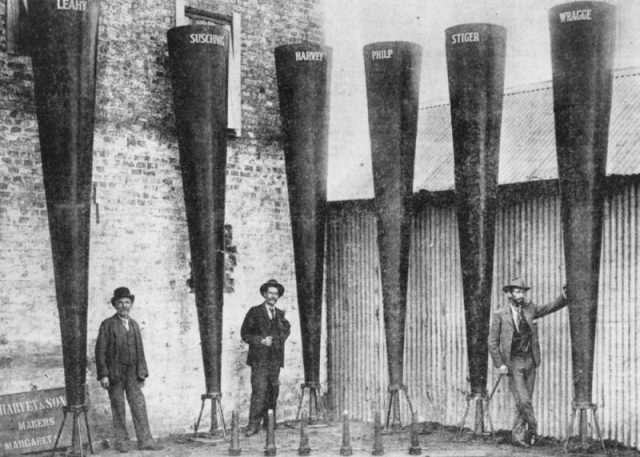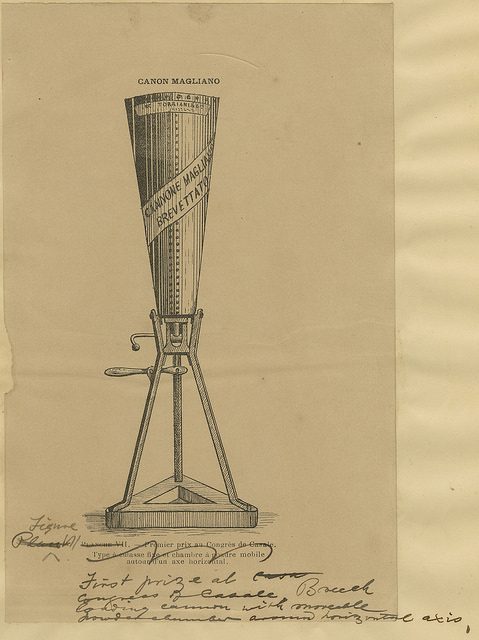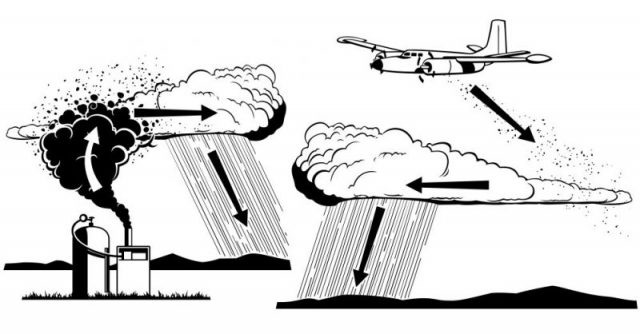The song “Cloudbusting,” released by Kate Bush in 1985, was based on Peter Reich’s childhood memories about his father’s rainmaking machine, the “cloudbuster.” Wilhelm Reich was a controversial Austrian doctor and psychoanalyst who, among other things, experimented with artificially stimulating rainfall. By the time Reich died in prison in 1957, he had become infamous for his radical and overtly sexual psychology methods and pseudo-scientific practices; reportedly, no academic journal released an obituary for him.
Another person who supposedly created a rainmaking device, and for whom, according to the Epoch Times, there also seems to be a dedicated song, was an Argentinean engineer named Juan Baigorri Velar. It was written in Spanish, and includes the following lines:
“Let it rain, let it rain
Baigorri is in the cave
Plug in the device, and watch it rain…”
Baigorri was allegedly able to interrupt drought seasons in remote areas of Argentina by using a mysterious machine of his own invention that he devised in the 1930s, and that only he knew how to operate. Today, unsurprisingly, there is no trace of Baigorri’s device.

Reports about Baigorri’s machine can be found in various newspaper archives that published stories about him, both in Argentina and internationally. Many details of Baigorri’s personal life are unknown or controversial. The Epoch Times writes that he was of Basque origin, and that he studied engineering. He also pursued a university degree in Geophysics after studying in Milan, Italy.
Baigorri created a device that was meant to find underground water sources by generating electromagnetic emissions. The Argentinean is said to have observed that when he used the device, it had an effect on the immediate environment, seemingly causing a small amount of precipitation in his surroundings. Therefore, he considered improving the device in order to use it for perhaps more significant things.
As some sources claim, it seems he had luck in his efforts. He devised a more complex machine that was able to attract all sorts of clouds in the skies. Newspapers of the day say that he reputedly created rainfall in areas of Argentina that were severely affected by dry seasons. Some people even called him the “Rain Wizard.” As soon as he appeared in a drought-stricken area, he produced inches of rains after plugging in the enigmatic device.

According to the Epoch Times, in the province of Santiago, in the north of Argentina, he stopped a drought period that had persisted for nearly one-and-a-half years. On another occasion, in 1951, he visited San Juan, a remote area that hadn’t experienced rain in some eight years. Shortly after Baigorri arrived, it is said that 1.2 inches of rain fell.
The rainmaking machine made Baigorri a popular man, and not only in Argentina. There were interested parties all the way from the U.S. who wanted to patent his invention. But Baigorri turned down such offers, explaining his machine was for Argentina only.
While many applauded Baigorri, others were reluctant to believe that a man can command the skies as if he were a god. People who perceived him as a charlatan included officials from the National Meteorological Service. Baigorri was reportedly challenged by them in 1939 to produce rainfall in Buenos Aires. Though he allegedly did create dark clouds which sent heavy showers to the country’s capital, people remained divided into believers and non-believers of his feats. It was also reported that heavy rains had been forecast on that particular day by meteorologists.
Baigorri kept the internal workings of machine clandestine. He never shared the details, although the Epoch Times reports that the machine had two settings: one for light rain, the other for heavy clouds that would bring a real downpour.

When Baigorri died a poor man in 1972, aged 81, his machine also seems to have disappeared. Nobody knew its whereabouts, nor how it worked. It is rumored that on the day of his funeral, it rained cats and dogs, an epilogue that might sound as if it was taken out of a magic-realism book penned by a literary giant such as Jorge Luis Borges.
Just for the record, in 1946, U.S. chemist and meteorologist Vincent Joseph Schaefer received official credit for inventing cloud seeding, a moment that signaled the beginning of an era of scientific experiments in the domain of weather control.
